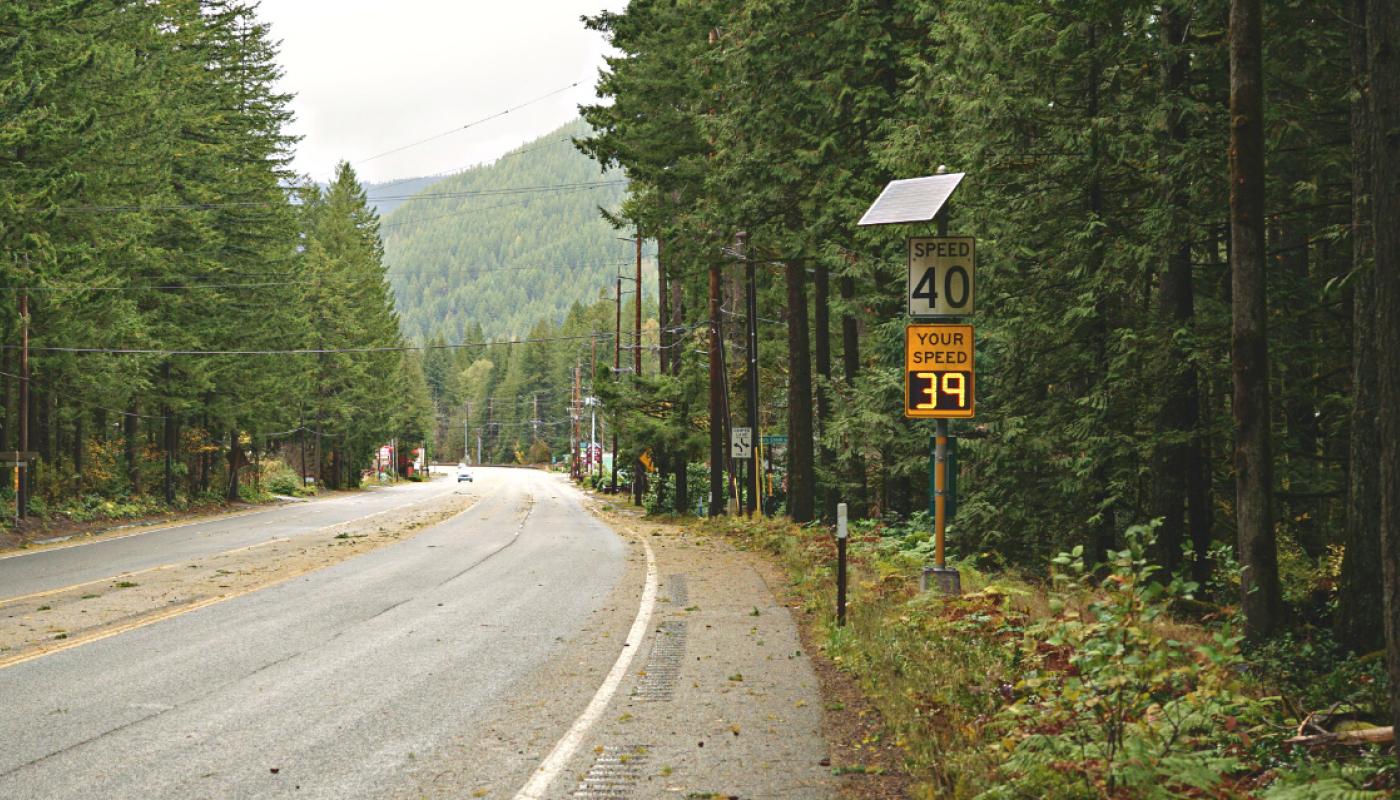Pedestrians’ risk of involvement in a vehicular accident rises as speed rises, and in the case of pedestrian’s hit by vehicles, the vehicle speed plays a key role in the severity of the injuries and survival rate. Communities recognize areas where drivers routinely exceed the posted speed limit as an increased risk to pedestrian safety, and have learned the advantages of deploying radar speed signs.
When to Deploy Radar Speed Signs
Radar speed signs might not be the right measure for every traffic calming scenario. To get the best benefit from deploying a speed sign, and the best value for community investment, perform a traffic survey to be sure a radar speed sign is warranted. Recommendations for speed sign deployment depend on meeting some combination of factors found in traffic survey reports. Roadways do not have to meet every criteria on the list, rather the combination of two or more factors may indicate conditions are favorable to successful radar sign deployment.
Criteria for Deployment
- 85th percentile speed exceeds posted speed limit by 5 mph or more
- Observed mean speed exceeds the posted limit by 5 mph or more
- Average Daily Traffic (ADT) > 500 cars
- History of speed related accidents
- Posted speed limit is 25 mph or more and another condition applies
- There is a school or park within ½ mile
- School or park zone speed limit is 15 mph or more
- Radar sign would supplement existing conditional signs (school zone flashers)
- Road Conditions—road curves, transitions or is approaching high speed intersection
How Radar Speed Signs Enhance Pedestrian Safety
Radar speed signs are a method of traffic calming that relies on driver feedback to encourage drivers to slow down. The signs get drivers’ attention and alert them that they are speeding. Field tests suggest that up to 75% of speeding drivers react to radar speed signs by slowing down. Communities that have deployed radar speed signs report average speeds 7-17% lower after deployment. Lowering traffic speeds help reduce the risk of vehicle collisions and improve the odds that pedestrians struck by cars will survive. Areas displaying these signs see more long term traffic calming benefits than police enforcement alone, and police list radar speed signs as their number one choice for traffic speed management. Radar signs can also be mounted on trailers for portability. Radar speed trailers can be used for road work projects, special events within the community that draw heavy traffic and large crowds, or to test deployment in problem areas.
Radar Speed Signs are cost effective
Radar signs are a relatively inexpensive traffic calming, and yet are remarkably effective. The initial investment in equipment is offset by the immediate results. These signs are relatively simple to install, requiring not much more than either a power source or solar cell. For municipal, county and state governments looking for solutions to problem speeding, radar speed signs are often the ideal choice to improve pedestrian safety.
